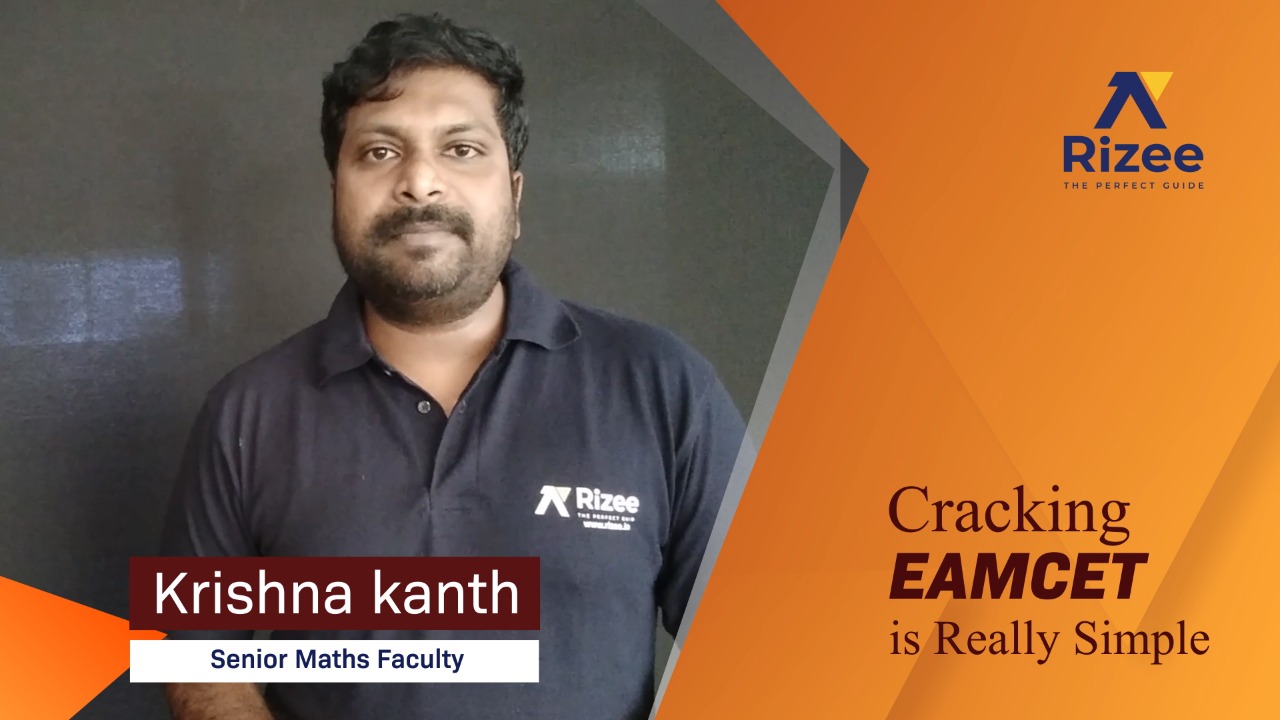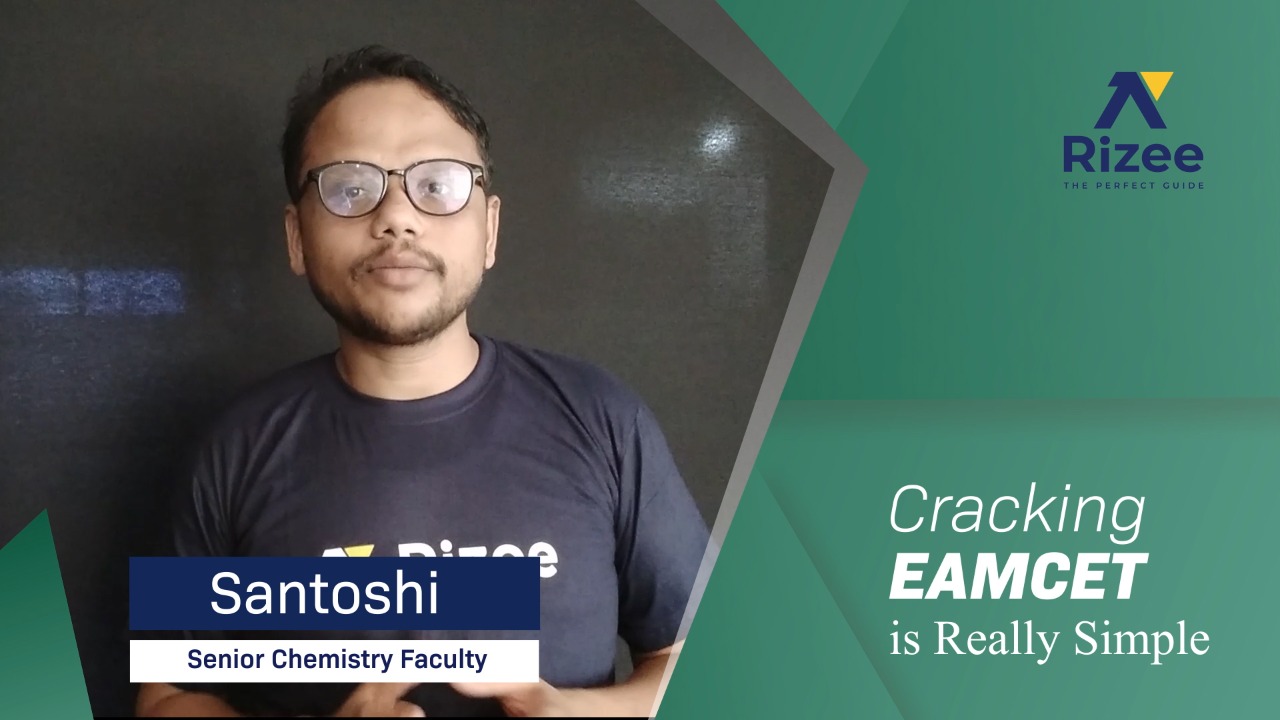All that You want to know about TS EAMCET 2021
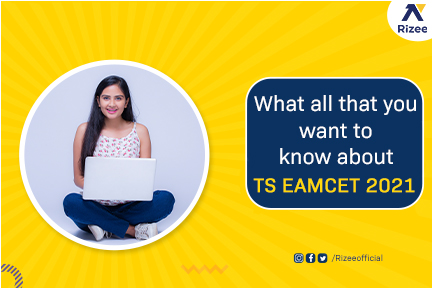
TS EAMCET is an entrance examination for admission into the first year of various undergraduate professional courses in colleges in Telangana.
THE Application fee for the same is Rs 400 for the candidates belonging to SC, ST, and PH categories. whereas, for other candidates, it is Rs 800. Students can pay that amount at TS Online centers Using card or net banking.
Eamcet- Engineering, Agriculture & Medical Common Entrance Test
Candidates can attend the TS EAMCET 2021 mock test on the official website of the examination
Note: NO IPE Weightage, Government has decided to exclude the IPE Weightage. Previously it was 25% of the total marks.
Exam level- State Level
| Stream | Courses |
| Engineering | Engineering, Bio technology, B. Tech. (Dairy Technology ), B. Tech. (Agr.Engg.),B.Tech.(Food Science and Technology) |
| Medical/Pharmacy | Medical Courses, B.Pharmacy,Pharm.D.etc B.sc ( Agriculture) |
TS EAMCET Eligibility Criteria 2021
- Candidates must have completed 16 years of age
- Candidates must be Indian nationals or Persons of India Origin (PIO) / Overseas Citizen of India (OCI) Card Holders.
- Candidates must domicile of Andhra Pradesh/TELANGANA
Exam pattern
| Particulars | Details |
| Examination Mode | Computer Based Test (CBT) |
| Duration | 3 Hours |
| Language of Examination | English and Telugu (Candidates who want to get questions translated in Urdu will be allotted a test center at Kurnool only |
| Section-wise distribution of questions | Physics -40 Questions Chemistry-40 Questions Mathematics/Biology-80 Questions |
| Type of Questions | Multiple Choice Questions (Objective) |
| Total Number of Questions | 160 questions |
| Marking Scheme | One mark will be awarded for every correct answer |
| Negative Marking | There is no Negative Marking |
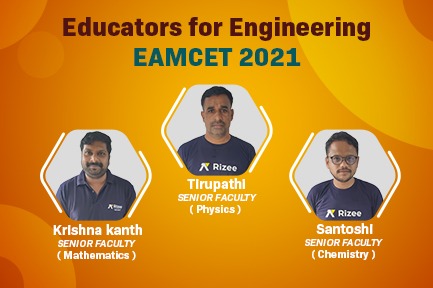
Eamcet Syllabus
Mathematics Syllabus
| Topics | Sub Topics |
| Algebra | Functions: Types of functions – Definitions – Inverse functions and Theorems – Domain, Range, Inverse of real-valued functions Mathematical Induction: Principle of Mathematical Induction & Theorems – Applications of Mathematical Induction – Problems on divisibility Matrices: Types of matrices – Scalar multiple of a matrix and multiplication of matrices – Transpose of a matrix – Determinants – Adjoint and Inverse of a matrix – Consistency and inconsistency of Equations- Rank of a matrix – solution of simultaneous linear equations complex Numbers: Complex number as an ordered pair of real numbers- fundamental operations – Representation of complex numbers in the form a+ib – Modulus and amplitude of complex numbers –Illustrations – Geometrical and Polar Representation of complex numbers in Argand plane- Argand diagram De Moivre’s Theorem: De Moivre’s theorem- Integral and Rational indices – n the roots of unity-Geometrical Interpretations – Illustrations Quadratic Expressions: Quadratic expressions, equations in one variable – Sign of quadratic expressions – Change in signs – Maximum and minimum values – Quadratic equations Theory of Equations: The relation between the roots and coefficients in an equation – Solving the equations when two or more roots of it are connected by certain relation – Equation with real coefficients, the occurrence of complex roots in conjugate pairs and its consequences – Transformation of equations – ReciprocalEquations Permutations and Combinations: Fundamental Principle of counting – linear and circular permutationsPermutations of ‘n’ dissimilar things taken ‘r’ at a time – Permutations when repetitions allowed – Circular permutations – Permutations with constraint repetitions – Combinations-definitions, certain theorems, and their applications Binomial Theorem: Binomial theorem for positive integral index – Binomial theorem for rational Index (without proof) – Approximations using Binomial theoremPartial fractions: Partial fractions of f(x)/g(x) when g(x) contains non –repeated linear factors – Partial fractions of f(x)/g(x) where both f(x) and g(x) are polynomials and when g(x) contains repeated and/or non-repeated linear factors – Partial fractions of f(x)/g(x) when g(x) contains irreducible factors |
| TRIGONOMETRY | Trigonometric Ratios up to Transformations: Graphs and Periodicity of Trigonometric functions – Trigonometric ratios and Compound angles – Trigonometric ratios of multiple and sub-multiple angles – Transformations – Sum and Product rules Trigonometric Equations: General Solution of Trigonometric Equations – Simple Trigonometric Equations – Solutions Inverse Trigonometric Functions: To reduce a Trigonometric Function into a bijection – Graphs of Inverse Trigonometric Functions – Properties of Inverse TrigonometricFunctions Hyperbolic Functions: Definition of Hyperbolic Function – Graphs – Definition of Inverse Hyperbolic Functions – Graphs – Addition formulae of Hyperbolic Functions Properties of Triangles: Relation between sides and angles of a Triangle – Sine, Cosine, Tangent and Projection rules – Half angle formulae and areas of a triangle – Incircle and Excircle of a triangle |
| VECTOR ALGEBRA | Addition of Vectors: Vectors as a triad of real numbers – Classification of vectors – Addition of vectors – Scalar multiplication – Angle between two non zero vectors – Linear combination of vectors – Component of a vector in three dimensions – Vector equations of line and plane including their Cartesian equivalent forms Product of Vectors: Scalar Product – Geometrical Interpretations – orthogonal projections – Properties of dot product – Expression of the dot product in I, j, k system – Angle between two vectors – Geometric Vector methods – Vector equations of the plane in normal form – Angle between two planes – Vector product of two vectors and properties – Vector product in i, j, k system – Vector Areas – Scalar Triple Product – Vector equations of the plane in different forms, skew lines, shortest distance and their Cartesian equivalents. A plane through the line of intersection of two planes, condition for coplanarity of two lines, perpendicular distance of a point from a plane, the angle between the line and a plane. Cartesian equivalents of all these results – Vector Triple Product –Results |
| MEASURES OF DISPERSION AND PROBABILITY | Measures of Dispersion – Range – Mean deviation – Variance and standard deviation of ungrouped/grouped data – Coefficient of variation and analysis of frequency distribution with equal means but different variances Probability: Random experiments and events – Classical definition of probability, Axiomatic approach and addition theorem of probability – Independent and dependent events – conditional probability- multiplication theorem and Baye’s theorem and applications Random Variables and Probability Distributions: Random Variables – Theoretical discrete distributions – Binomial and Poisson distributions |
| COORDINATE GEOMETRY | Locus: Definition of locus – Illustrations – To find equations of locus – Problems connected to it Transformation of Axes: Transformation of axes – Rules, Derivations, and Illustrations – Rotation of axes – Derivations – Illustrations The Straight Line: Revision of fundamental results – Straight line – Normal form – Illustrations – Straight line – Symmetric form – Straight line – Reduction into various forms – Intersection of two Straight Lines – Family of straight lines – Concurrent lines – Condition for Concurrent lines – Angle between two lines – Length of the perpendicular from a point to a Line – Distance between two parallel lines – Concurrent lines – properties related to a triangle Pair of Straight lines: Equations of pair of lines passing through origin – the angle between a pair of lines – Condition for perpendicular and coincident lines, bisectors of angles – Pair of bisectors of angles – Pair of lines – second-degree general equation – Conditions for parallel lines – distance between them, Point of the intersection of pair of lines – Homogenizing a second-degree equation with a first-degree equation in x and y Circle: Equation of circle -standard form-center and radius equation of a circle with a given line segment as diameter & equation of a circle through three noncollinear points – parametric equations of a circle – Position of a point in the plane of a circle – the power of a point-definition of tangent-length of a tangent – Position of a straight line in the plane of a circle-conditions for a line to be tangent – chord joining two points on a circle – equation of the tangent at a point on the circle- point of contact-equation of normal – Chord of contact – pole and polar-conjugate points and conjugate lines – equation of chord in term of its midpoint – Relative position of two circles- circles touching each other externally, internally- common tangents –centers of similitude- equation of pair of tangents from an external point System of circles: Angle between two intersecting circles – Radical axis of two circles- properties- Common chord and common tangent of two circles – radical center Parabola: Conic sections –Parabola- equation of the parabola in standard form-different forms of parabola parametric equations – Equations of tangent and normal at a point on the parabola ( Cartesian and parametric) – conditions for a straight line to be a tangent Ellipse: Equation of ellipse in standard form- Parametric equations – Equation of tangent and normal at a point on the ellipse (Cartesian and parametric) – condition for a straight line to be a tangent Hyperbola: Equation of hyperbola in standard form- Parametric equations – Equations of tangent and normal at a point on the hyperbola (Cartesian and parametric) – conditions for a straight line to be a tangent-Asymptote. j) Three Dimensional Coordinates: Coordinates – Section formulae – Centroid of a triangle and tetrahedron Direction Cosines and Direction Ratios: Direction Cosines – DirectionRatios Plane: Cartesian equation of Plane – SimpleIllustrations |
| CALCULUS | Limits and Continuity: Intervals and neighborhoods – Limits – Standard Limits –Continuity Differentiation: Derivative of a function – Elementary Properties – Trigonometric, Inverse Trigonometric, Hyperbolic, Inverse Hyperbolic Function – Derivatives – Methods of Differentiation – SecondOrder Derivatives Applications of Derivatives: Errors and approximations – Geometrical Interpretation of a derivative – Equations of tangents and normals – Lengths of a tangent, normal, subtangent, and subnormal – Angles between two curves and condition for orthogonality of curves – Derivative as Rate of change – Rolle’s Theorem and Lagrange’s Mean value theorem without proofs and their geometrical interpretation – Increasing and decreasing functions – Maxima and Minima Integration: Integration as the inverse process of differentiation- Standard forms -properties of integrals – Method of substitution- integration of Algebraic, exponential, logarithmic, trigonometric, and inverse trigonometric functions – Integration by parts – Integration by Partial fractions method – Reduction formulae Definite Integrals: Definite Integral as the limit of the sum – Interpretation of Definite Integral as an area – Fundamental theorem of Integral Calculus (without proof) – Properties – Reduction formulae – Application of Definite integral to areas Differential equations: Formation of differential equation-Degree and order of an ordinary differential equation – Solving differential equation by i) Variables separable method, ii) Homogeneous differential equation, iii) Non – Homogeneous differential equation, iv) Linear differential equations |
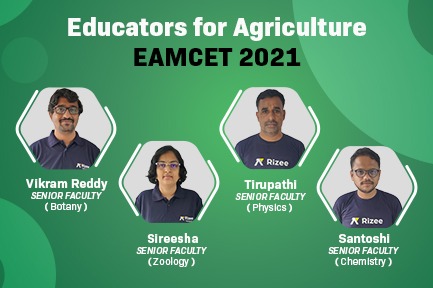
BIOLOGY SYLLABUS
Biology section contains two parts that are Botany & Zoology
Botany
- Diversity in the Living World
- Reproduction in Plants
- Plant Systematics
- Plant Physiology
- Structural Organization in Plants- Morphology
- Cell Structure and Function
- Internal Organization of Plants
- Plant Ecology etc….
Zoology
- Human Reproduction
- Genetics
- Organic Evolution
- Diversity in the Living World
- Animal Diversity –1, Animal Diversity-2
- Structural Organization in Animals, Biology & Human Welfare
- Structural Organization in Plants- Morphology
- Type Study of PeriPlaneta Americana
- Ecology and Environment
- Human Anatomy and Physiology-3 etc…
Physics Syllabus
- Work Energy and Power
- Motion in Straight Line
- Units and Measurements
- Laws of Motion
- System of Particles and Rotational Motion
- Oscillations
- Gravitation
- Mechanical Properties of Solids
- Mechanical Properties of Fluids
- Thermal Properties of Matter
- Thermodynamics
- Kinetic Theory
- Waves
- Ray Optics and Optical Instruments
- Wave Optics
- Electric Charges and Fields
- Electrostatic Potential and Capacitance
- Current Electricity
- Moving Charges and Magnetism
- Magnetism and matter
- Electromagnetic Induction
- Alternating Current
- Electromagnetic Waves
- Dual Nature of Radiation and Matter
- Atoms
- Nuclei
- Semiconductor Electronics
- Communication Systems
Chemistry Syllabus
- Atomic Structure
- Classification of Elements and Periodicity in properties
- Chemical Bonding and Molecular Structure
- Status of Matter: Gases and Liquids
- Stoichiometry
- Thermodynamics
- Chemical Equilibrium and Acid-Bases
- Hydrogen and its Compounds
- The s Block Elements
- P- Block Elements Group 13 (Boron Family)
- P- Block Elements Group 14 (Carbon Family)
- Environmental Chemistry
- Organic Chemistry- Some basic Principles and Techniques and Hydrocarbons
- Solid State
- Solutions
- Electrochemistry and Chemical Kinetics
- Surface Chemistry
- General Principles of Metallurgy
- p-Block Elements
- D and f block elements and Coordination compounds
Basic Details
- It is conducted by Jawaharlal Nehru Technological University Hyderabad
- Around 1.5lakhs to 2lakhs people write engineering exam and around 60k to 80k people write Agriculture exam every year
Preparation Tips:
Through EAMCET YOU WILL BE ABLE TO GET ADMISSION INTO SEVERAL COURSES LIKE B.TECH /AGRI BSC /VETERINARY AND SO ON
You need to plan yourself well for these exams. If you are in Intermediate 2nd year you have to prepare for the IPE examination also, for the IPE Examination you have to prepare for the EAMCET. While preparing for IPE look at your Syllabus in EAMCET and if you have common topics for IPE and eamcet syllabus together. Try to solve at least 5 questions from the same topic. So, look at those 5 questions from all the resources like if the book solved all exercise problems and example problems. From previous years papers solved all papers at least for last 5 years question papers of both AP and TS eamcet because both syllabus and pattern of question is similar. You have to revise before your final deadline. Most of the students lack revision as they prepare all the topics but failed to do revision and forget at the time of exam so revision is very important and critical. To crack eamcet you have to revise properly. Mock Test will give you the confidence in cracking the eamcet examination. This gives you an idea before going to an exam how to attempt time management and other related things.
Conclusion:
Things to look in for resources:
1.Syllabus
2.Main resources are the last 5 years previous papers
3.Blueprint as per latest notifications
4. Mock tests
Steps for Good Rank
1.Plan – You should plan yourself and time as you have to give IPE examination also
2.Time Management- It is very important as it has importance in all 3 stages which is while preparing, revising and while giving examination
3. Revision- For revision, you have to prepare short notes which you can be used while revision, so you can use all revision in a short time
4. Practice- finally practice is an important thing that you need to follow. If you don’t practice Questions, previous years papers, the expected question then you are not going to get a good rank in the EAMCET exam
We are pleased to announced 45 days intence program for all the aspirant students who wants to crack EAMCET 2021 with better rank. You will get this program with with Mock tests, error correction tests, cumulative tests and Grand Test on the completion of the program.
You can visit www.rizee.in/EAMCET for a whole new experience of learning on your chrome or any other browser
We are giving you a methodical syllabus coverage for best results including daily Live Classes for all the subjects – MPC and BiPC separately. We have covered everything for you. You have the opportunity to get a Free Trial to get a Preview of the advanced exam preparation.
As per the request of a large part of our students for a detailed crash course which will give enhanced and important syllabus coverage. We are glad and proud to present Rizee Eamcet Crash Course 2021
